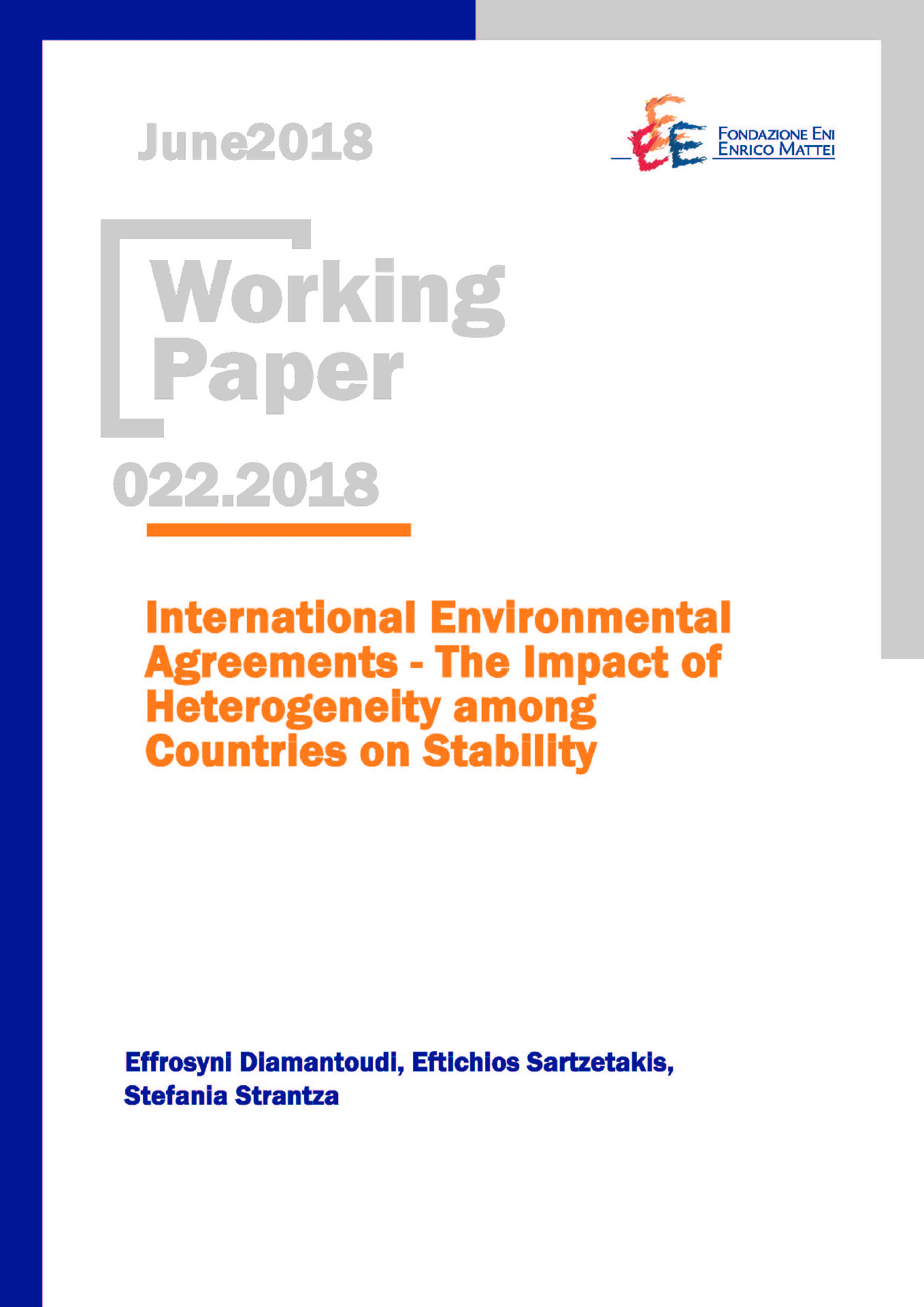International Environmental Agreements – The Impact of Heterogeneity among Countries on Stability

11.06.2018
Effrosyni Diamantoudi (Department of Economics – Concordia University); Eftichios Sartzetakis (Department of Economics – University of Macedonia); Stefania Strantza (Department of Economics – Concordia University)
D6, Q5, C7
Environmental Agreements
Climate and Sustainable Innovation
Massimo Tavoni
The present paper examines the stability of self-enforcing International Environmental Agreements (IEAs) among heterogeneous countries in a twostage emission game. In the first stage each country decides whether or not to join the agreement, while in the second stage the quantity of emissions is chosen simultaneously by all countries. We use quadratic benefit and environmental damage functions and assume k types of countries that differ in their sensitivity to the global pollutant. We find that the introduction of heterogeneity does not yield larger stable coalitions. In particular, we show that, in the case of two types, when stable coalitions exist their size is very small, and, if the asymmetry is strong enough, they include only one type of countries. Moreover, heterogeneity can reduce the scope of cooperation relative to the homogeneous case. We demostrated that introducing asymmetry into a stable, under symmetry, agreement can disturb stability.
***
Suggested citation: Diamantoudi, E., E. Sartzetakis, S. Strantza, (2018), ‘International Environmental Agreements – The Impact of Heterogeneity among Countries on Stability’, Nota di Lavoro 22.2018, Milano, Italy: Fondazione Eni Enrico Mattei
